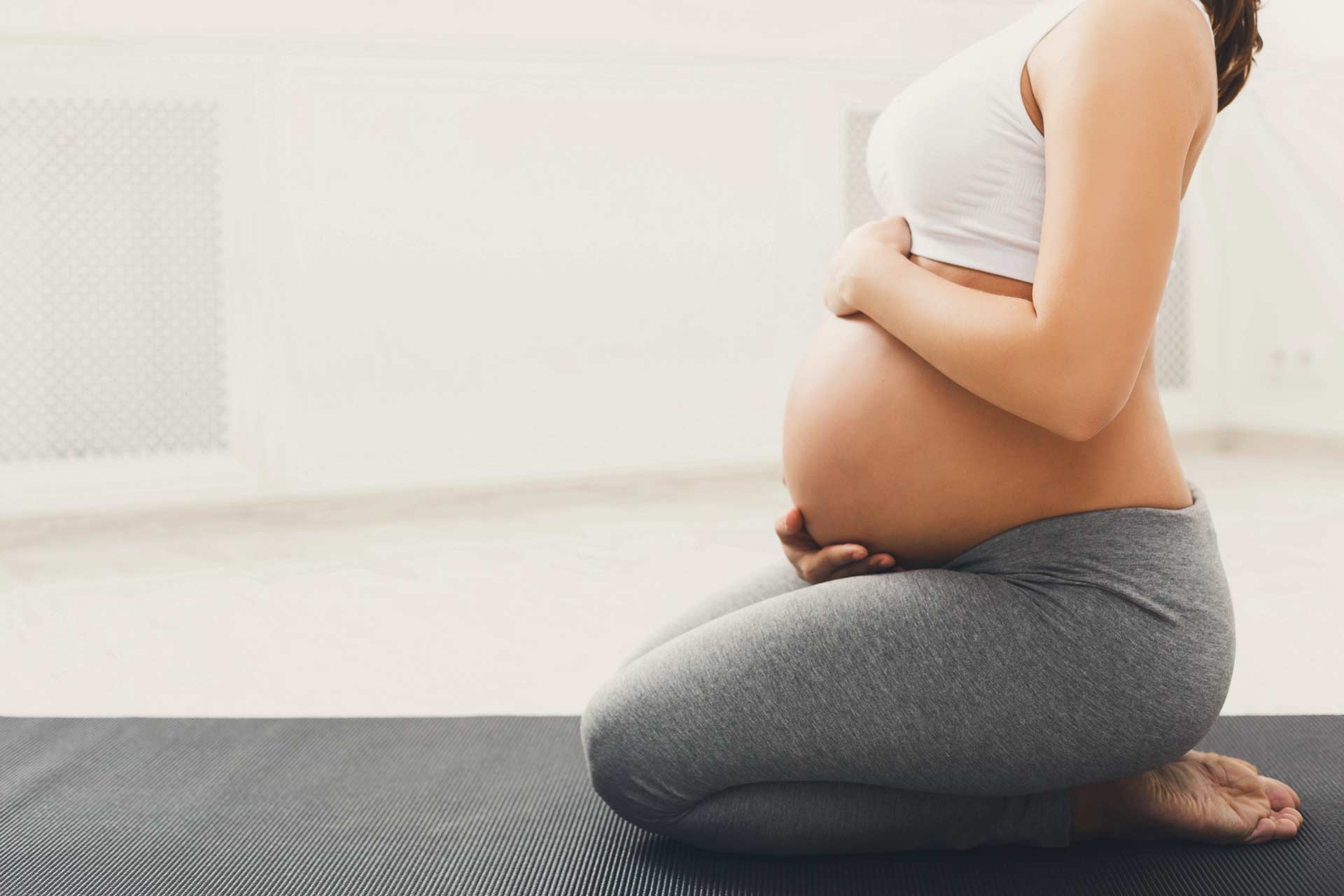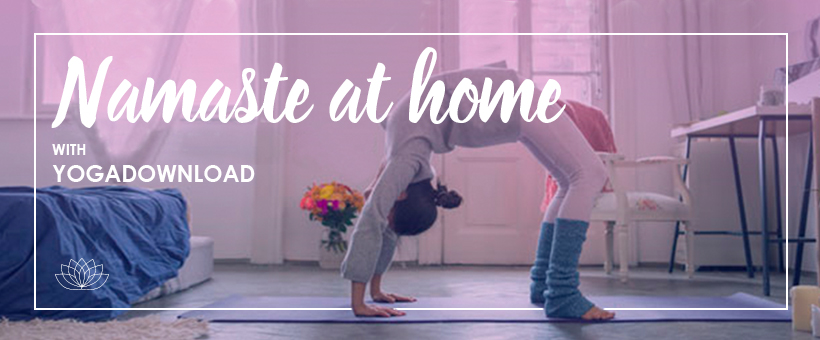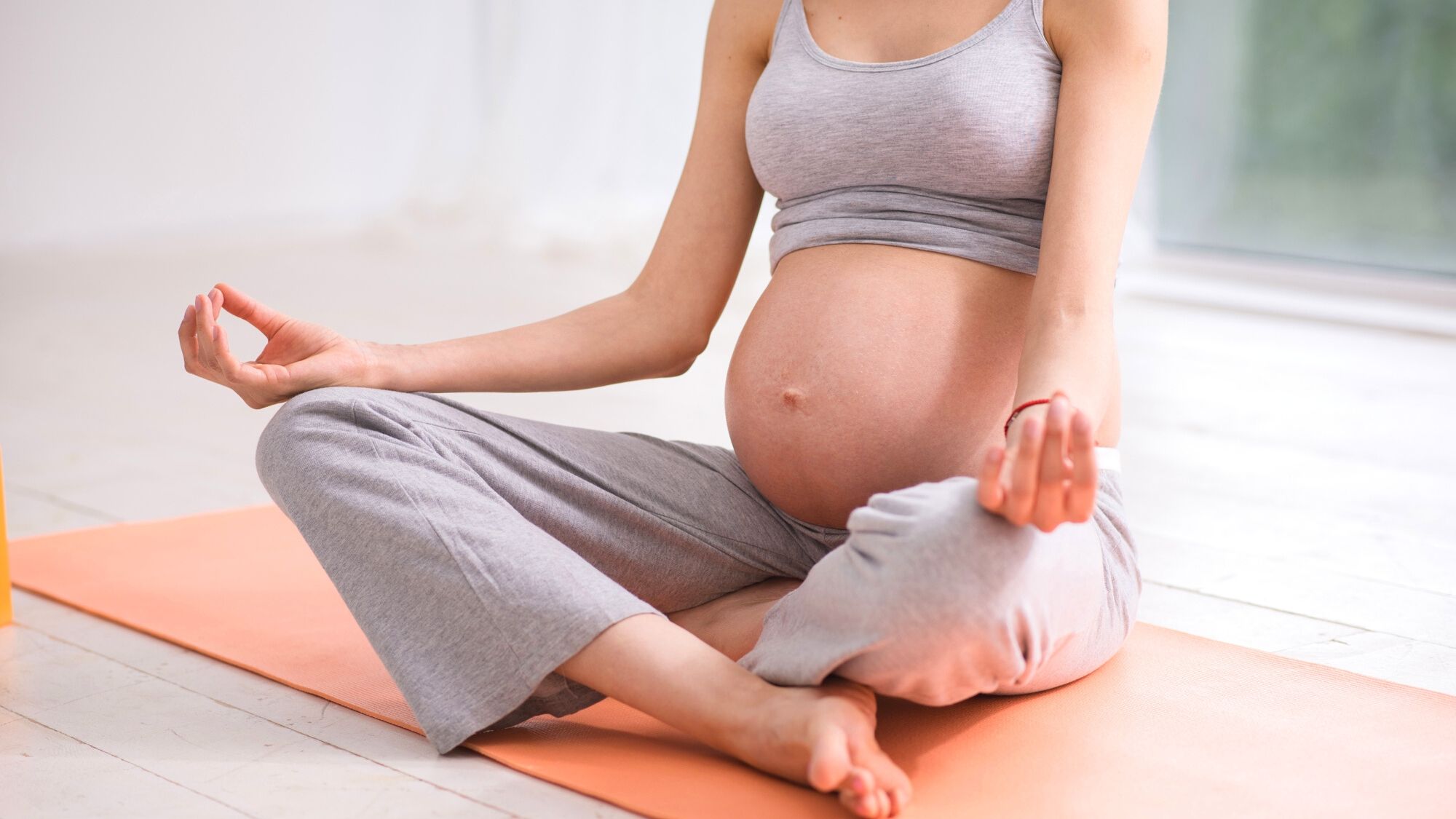Yoga for pregnant women
Whether you are a mother-to-be or not, the benefits of yoga are true for most of us.
Between a series of yoga postures, breathing exercises, mindfulness or flexibility, a regular practice of yoga (prenatal or not) can be very interesting to stimulate our well-being.
In 2017, the practice of yoga concerned 300 million people in the world. Among these yoga practitioners, 70% are women.
Here are our tips to do yoga and help relax your muscles during the prenatal period.
What is prenatal yoga?
When you are expecting a baby, practicing yoga for pregnant women is a great alternative to be more relaxed and serene.
Because yes, in nine months of pregnancy (or maybe even less), you'll be a mother-to-be, and back pain, the stress of weight gain, or the urge to relax your perineum makes you want to relax and soothe yourself.
This is where prenatal yoga comes in, which will allow you to experience the birth preparation for pregnant women in the best possible way, and will give you a gift for stretching and yoga exercises in itself. Bye bye back pain and abdominal pain!
Yoga during pregnancy means knowing how to listen to your body, but also to your baby's body.
Although it is possible to take individual classes with a yoga teacher, group classes allow you to talk with other future moms-to-be about your pregnancy, your fears and your desires as a mother-to-be.
In any case, prenatal yoga remains a good exercise in preparation for childbirth.

This is a yoga class, intended only for pregnant women, and is open from a certain month of pregnancy.
The objective here is to learn to better know your body, while developing flexibility, as well as the qualities that will make your pregnancy and the day of delivery much more relaxed and serene.
A yoga session that is beneficial on many levels in the end!
Need and/or desire to approach my pregnancy serenely?
More than a yoga class and better than a physical exercise, prenatal yoga also allows a real accompaniment of the future mother, whether you know the delivery date or not, whether you need to tone up or not.
The goal is to help foster harmony between the mother and the unborn baby, so that the yoga postures - a greeting to the sun, a stretch, a relaxation - become more physically enjoyable with each session, month by month, week by week.
Presentation of prenatal yoga
Prenatal yoga was developed and popularized by a woman doctor, Bernadette de Gasquet, who revolutionized childbirth practices during the 1980s.
The discipline is certainly not directly aimed at preparing for childbirth, but rather at preparing the body, notably to relieve any pain before the arrival of a baby.
The work of the perineum in fact, by learning to breathe well with the diaphragm, makes the muscle supple, toned, and facilitates recovery.
Also, the baby will be well positioned at the time of delivery.
Prenatal yoga claims to be a "gentle yoga" - relaxation, release of tension for more serenity, letting go, and better address the contractions during childbirth -, whose goal is to help the body to better carry the baby.
It is therefore logically an activity also proposed by midwives.
It should be noted that this form of yoga is not recommended in early pregnancy, because the sequences of yoga sessions can cause organ descents (rarely), and can disrupt the baby's development.

Why do yoga when you're pregnant?
Prenatal yoga is therefore the type of yoga that helps to relieve the hips, to improve breathing skills, or to develop more blood circulation in preparation for childbirth.
But more concretely, it is a discipline specific to pregnancy, which therefore includes adapted postures, special breathing exercises, or even a softer muscular strengthening than dynamic yoga.
And among these benefits are :
• Have a softer view of pregnancy,
• Preparing for childbirth,
• Meet other pregnant women and mothers-to-be to exchange and reassure each other,
• Become aware of your pregnant body,
• Don't see motherhood as a hindrance to physical activity,
• Take advantage of the first few months to relieve potential pain,
• Also reassure the father-to-be from the 1st month,
• Stretch the lower back, abdominals,
• Recovering vital energy, reconnecting body and mind,
• Relaxing during your pregnancy.
In short, while prenatal yoga is a physical activity that can be practiced by many pregnant women, the fact remains that a good practice of prenatal and postnatal yoga can reduce back pain, organize a good pregnancy follow-up, and jointly relieve the mind.
While certain postures should be avoided, other postures - called asanas - are preferred, so as to suit the body of a pregnant woman.
In addition to the physical effort of stretching, we will also work on breathing: in yoga jargon, it is called pranayama.
It is the discipline of the breath through the knowledge and control of prana, the universal vital energy (yes, yoga is strongly imbued with spirituality!).
Contraindications of yoga during pregnancy
A good practice of prenatal yoga can be accompanied by certain contraindications, which are the spearhead of such an activity.
Indeed, it goes without saying, but a pregnant woman is a more fragile woman, less able to practice all the postures, for the simple reason that each class brings the pregnancy calendar a little closer to the term of delivery.
Contrary to what people say, it is not so complicated to give birth!
These contraindications are not to be neglected.
Indeed, one of the first and most important is that yoga is strongly advised against during the first trimester of pregnancy.
Because yes, during this period, the organs and nervous system of the future baby are forming, it is therefore more prudent to avoid any physical activity, therefore any yoga training too intense.
Moreover, even after this period, prenatal yoga can be physical, sometimes even too intense, to the point that it can cause a miscarriage.
Of course, this traumatic event is rare, even extremely rare, but it does exist, and should be noted by everyone.
So, whether you have back pain, sciatica, or spinal pain, it is good to note these small defects and complications that yoga can bring when you are pregnant.
In the same way, one should also avoid twisting, inversions, as well as postures on the belly which, logically, will lean on sensitive areas of the body when one is pregnant, and will show a physical effort much too intense for the future baby, and, especially, for the mother-to-be.
Here's something to reassure yourself and live your pregnancy to the fullest by knowing this, even if the teacher will probably know better than you!

Breathing in yoga, an ally of motherhood
When we decide to take yoga classes for pregnant women, we don't necessarily measure the total consequences of our decision.
Certainly, it will be a question of developing a stronger relationship with one's body, a more focused mastery of certain postures, or a different vision of motherhood, but a central element will come into play in all this, and that is the breath, the breathing.
In fact, when you start to exceed a certain number of months, the breath is an essential support to carry out your yoga exercises.
We sometimes talk about pranayama, but this is more a question of knowing how to execute a fluid breath than of mastering a technique in its own right.
In fact, if the breath has set the rhythm of our lives since our birth, it also has extraordinary powers to allow us to :
• Manage our stress,
• To relax,
• Adopt the best possible posture,
• Make an effort,
• Oxygenate his lungs in some way,
• To make certain asanas possible.
In short, the breath, beyond being a support, is a tool for the good realization of yogic postures, and will allow us to make possible a whole bunch of postures that we would not necessarily have thought possible, especially those that are several months pregnant.
All this, and much more, will be explained even better by a teacher who, without a doubt, knows these problems.
Prenatal yoga
In prenatal yoga as in nidra yoga or online yoga, the figure of the teacher is a bit like that of a tutor, who is believed on words, and whose every piece of advice is worth its weight in gold.
In prenatal yoga, this is even more the case when we consider that our activity and postures will interact with our unborn baby.
All these questions, all these interrogations, the teacher knows them, has known them with other pregnant yogi women, and will know how to answer them.
Because when we take a yoga class, we expect the teacher to also be there to reassure us, and to make us aware that what we are doing is good, is useful, is efficient, and will help us to manage our pregnancy as well as possible.
Moreover, yoga classes for pregnant women are, precisely, only for pregnant women. It is therefore a privileged moment, the ideal time to develop in yoga, yourself and your unborn baby.
Thus, doing yoga while pregnant is possible, and even highly recommended.
Whether you're stressed, relaxed or simply eager to try, prenatal yoga is probably an activity that will make you see yoga in a different way, but not only.
In fact, between breathing and stretching, your entire pregnancy and the vision of your unborn baby will be altered, so that you'll be more positive than ever!
We haven't lost you? Come on, let's give it a try!

Some prenatal yoga exercises and postures
We have chosen to explain some yoga postures for pregnant women because it can be beneficial for future parents to start practicing at home before the first class.
These yoga postures are easy to do and will allow you to live your pregnancy serenely.
The cat
The cat's posture aims to synchronize movements with breathing. It helps to relieve back pain. Kneel down, feet and hands supported on the ground, leaving the legs slightly apart the width of the pelvis. While breathing, bring your head up, tucking your back in. Round the back - like a frightened cat - while exhaling, and bring the head down as if to look at the navel. Do 5 sequences, concentrating on breathing.
The Butterfly
This asana is indicated to tone and soften the thighs and pelvic floor muscles. In a seated position, pull the legs and feet inward until the heels touch the buttocks. Hold the feet in both hands and breathe at the same time. Make up and down movements with your knees, but never force if you can't get your knees to touch the floor. It is advisable to just go as low as possible.
The mountain
The mountain posture helps to work on balance and mobility. In the standing position, legs spread out the width of the pelvis - and feet well parallel to the ground -, hands folded on themselves at chest level: hold the position for a few minutes while breathing slowly.
The warrior
The warrior will tone the legs and arms, and facilitate the recovery of balance. If you have back pain, in the lumbar region, this is a good exercise. In a standing position, legs apart, turning the right foot a quarter turn to the right, place the left foot perpendicular to the right foot (to maintain good balance). Bend the right knee slightly and keep the left leg straight. Raise the arms slowly and calmly until they are parallel to the ground and look to the right. No, this is not done to imitate the scarecrow that is planted in the countryside to scare birds away ... Remain in this position by taking 5 calm and regular breaths, then return to the initial position (standing), exhaling and pushing the bent leg backwards. Repeat the same movement with the other leg.
The tree
Finally, the posture of the tree - no, it's not Lucy... - makes the hips, thighs and legs work. It is ideal to work on her balance. In standing position, gently lift the right foot and rest it against the left thigh. Inhale at the same time, raise your arms towards the sky and join your palms together. Take 5 calm breaths in this posture.
Of course, these postures are not exhaustive, there are many others. Other examples of yoga postures for pregnant women are available on Youtube and blogs.


